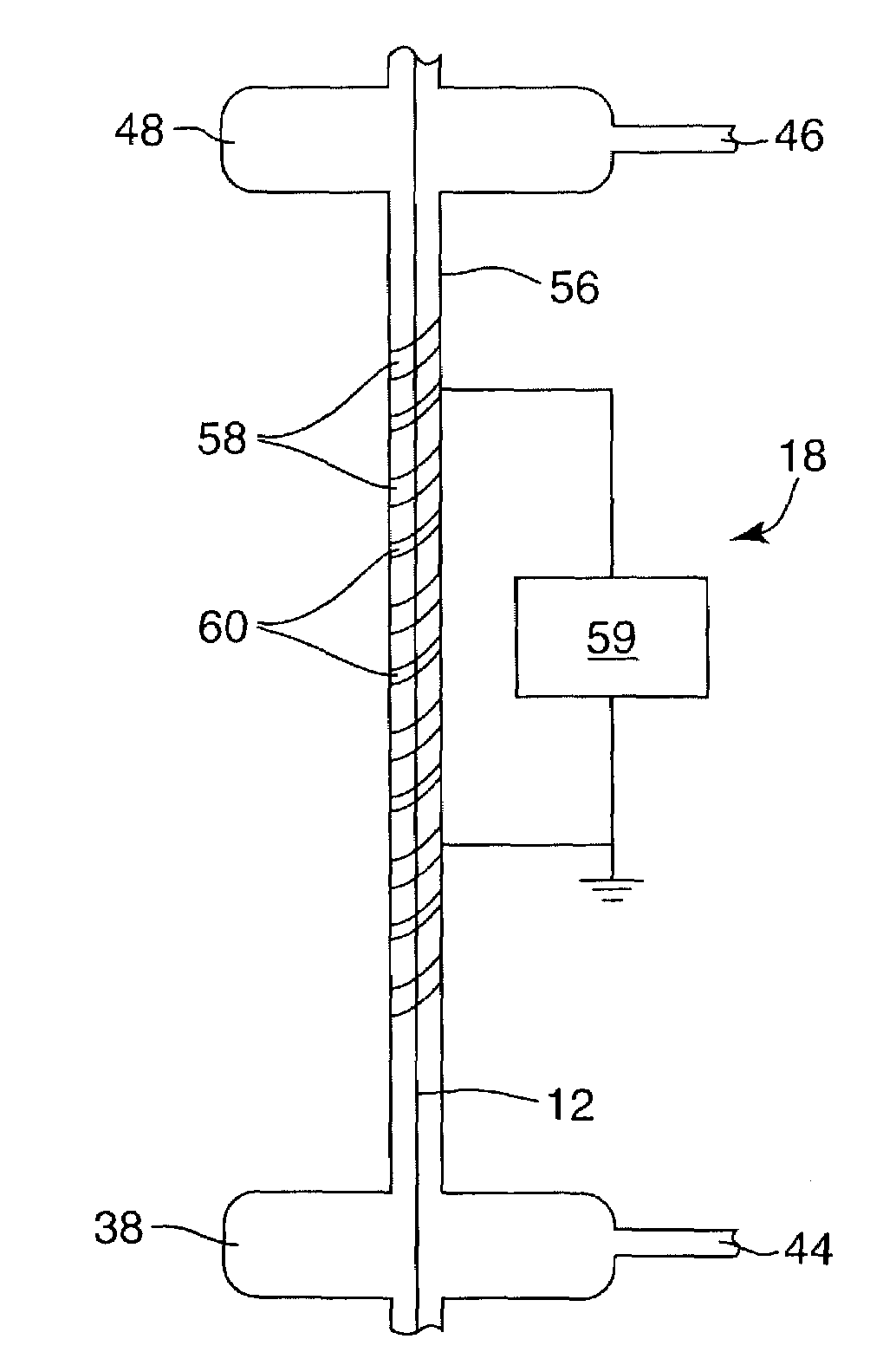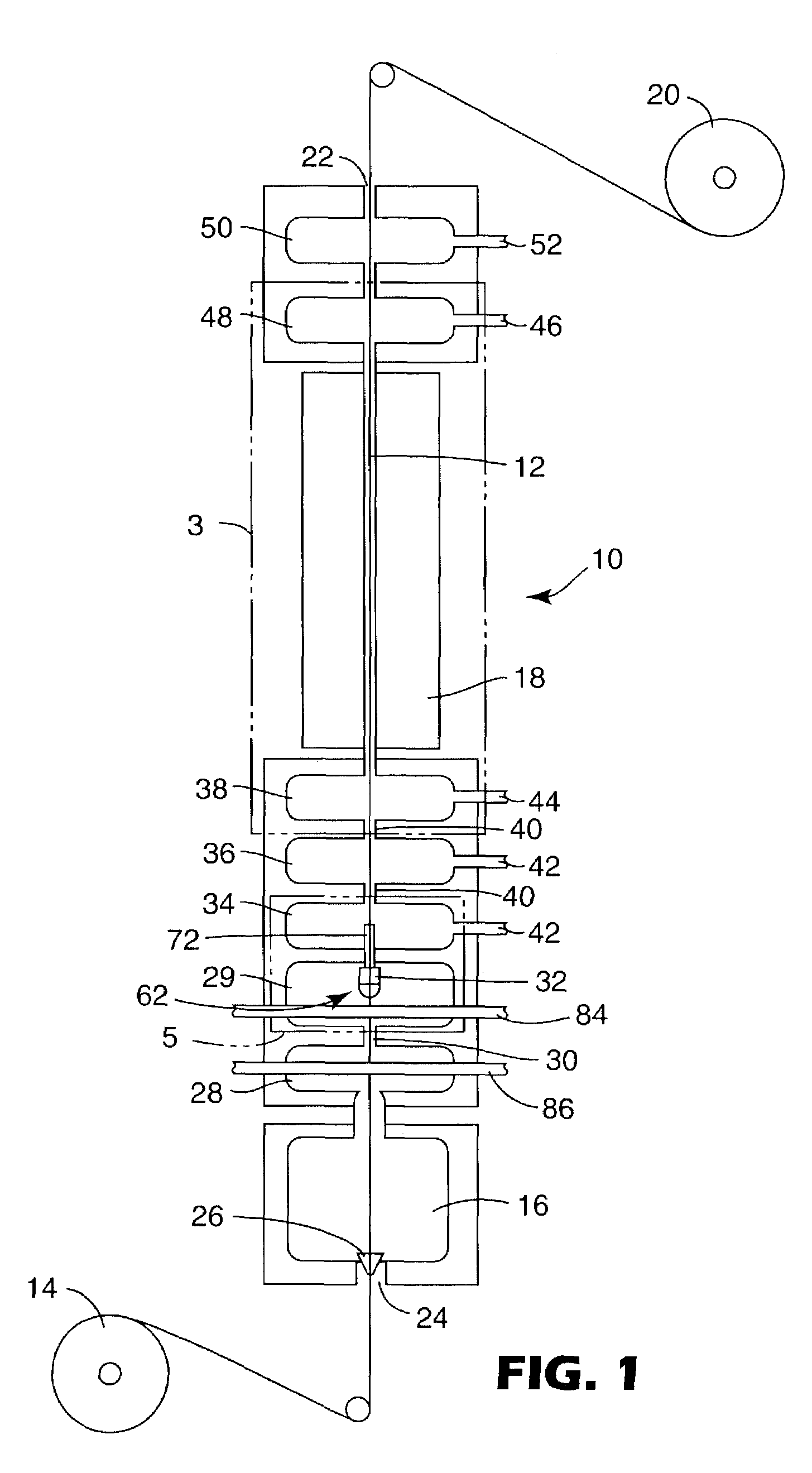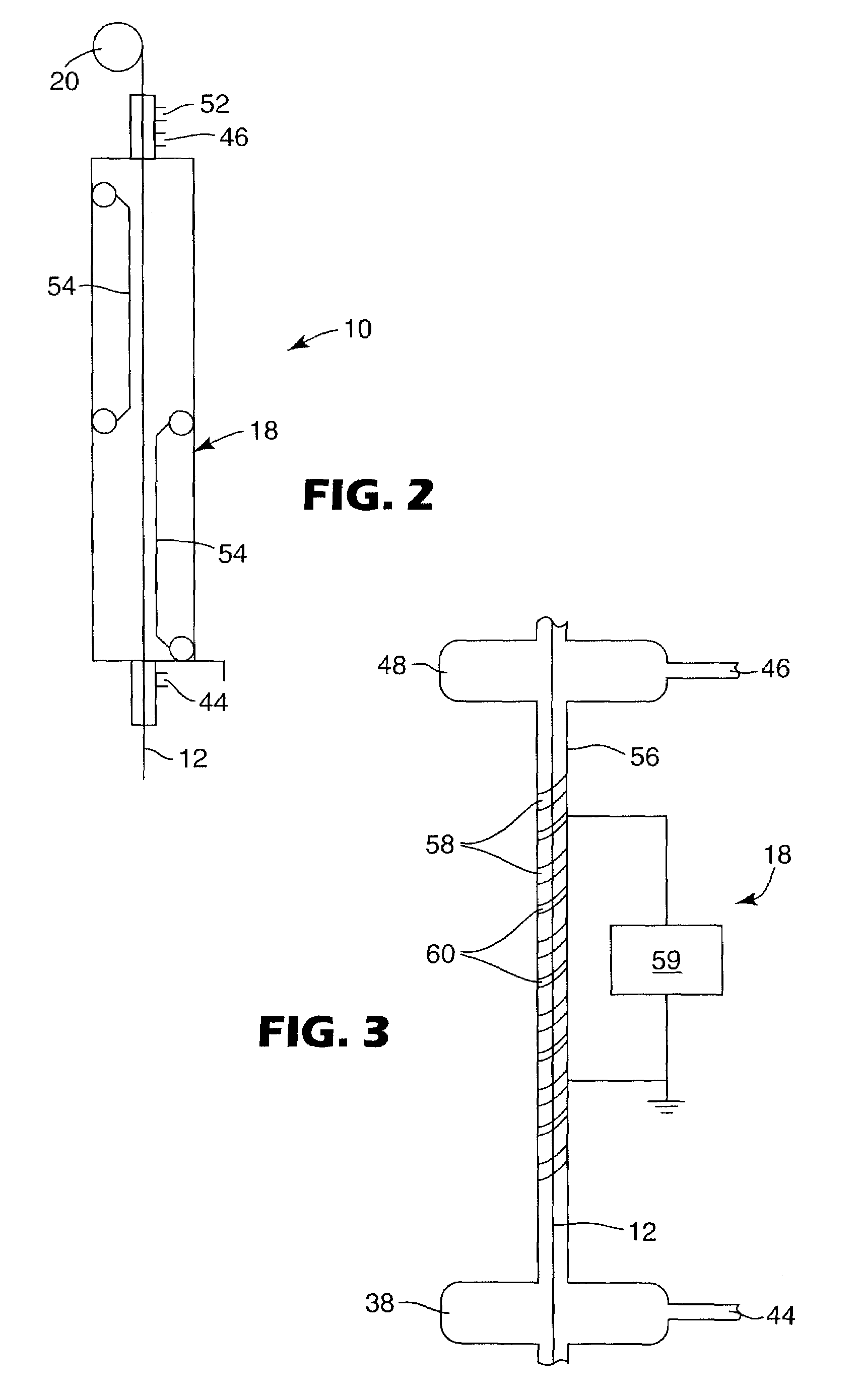Plasma reactor including helical electrodes
a technology of helical electrodes and reactors, applied in the field of coating optical fibers, can solve the problems of affecting the processing efficiency of optical fibers, affecting the quality of optical fibers, and forming contaminating residues on processed optical fibers, so as to eliminate vibration from optical fibers during processing
- Summary
- Abstract
- Description
- Claims
- Application Information
AI Technical Summary
Benefits of technology
Problems solved by technology
Method used
Image
Examples
example 1
[0054]The purpose of this example is to demonstrate that, under controlled conditions, a bare, stripped or otherwise uncoated glass fiber may be repeatedly reciprocated in contact with melting ice, or tapped against it, without noticeably altering the strength characteristics of the glass fiber.
[0055]Twenty samples of 3M #303 optical fiber, each two-meters in length, were treated using concentrated sulfuric acid at a temperature of 165° C. to strip buffer coating from the optical fibers to produce bare, uncoated portions approximately two inches long. The stripped portions of the optical fibers were rinsed in water and isopropyl alcohol, after which the processed lengths of optical fiber were stored in boxes to avoid touching the exposed glass.
[0056]Seven of the stripped fibers were rubbed to and fro across cubes of melting ice obtained from the freezer portion of a domestic refrigerator. The fibers were gripped by hand on either side of the stripped region and moved back and forth ...
example 2
[0062]Following qualitative studies of the effect of ice in contact with stripped optical fibers, the use of an ice pressure bearing was investigated in equipment used to coat diamond-like glass on stripped optical fiber at reduced pressures associated with chemical vapor deposition of material.
[0063]A tubular reaction chamber was constructed using a PYREX® glass tube, 122 cms (four feet) long, having an internal diameter of approximately 1.00 cm (0.4 inch). A pair of electrodes was wrapped helically around the outside of the glass tube for a length of approximately 91.5 cm (three feet) to provide the tubular structure shown in FIG. 3. The electrode-wrapped tube provided the low-pressure plasma reactor used to deposit diamond-like glass coatings on stripped optical fibers threaded through the optical fiber processing equipment shown in FIG. 1.
[0064]The use of two electrodes, wrapped as a double helix around the outside of the tubular reaction chamber, provides a localized electric f...
PUM
| Property | Measurement | Unit |
|---|---|---|
| Radius | aaaaa | aaaaa |
| Radius | aaaaa | aaaaa |
| Length | aaaaa | aaaaa |
Abstract
Description
Claims
Application Information
 Login to View More
Login to View More - R&D
- Intellectual Property
- Life Sciences
- Materials
- Tech Scout
- Unparalleled Data Quality
- Higher Quality Content
- 60% Fewer Hallucinations
Browse by: Latest US Patents, China's latest patents, Technical Efficacy Thesaurus, Application Domain, Technology Topic, Popular Technical Reports.
© 2025 PatSnap. All rights reserved.Legal|Privacy policy|Modern Slavery Act Transparency Statement|Sitemap|About US| Contact US: help@patsnap.com



